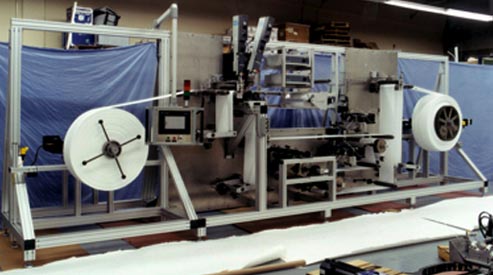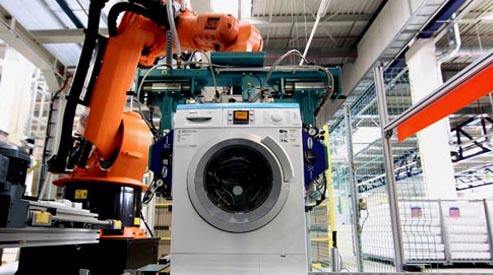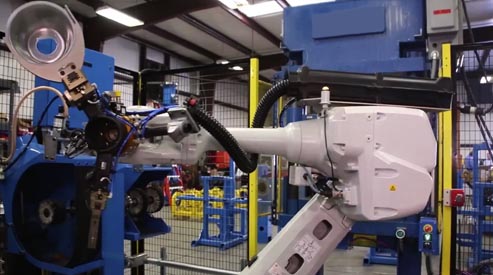Over the years our efforts to assist our clients in meeting their automation goals has achieved exceptional results. Here are a few of our favorite success stories:

The development of this Veterinarian ace bandage wrap has given in to the development of the Ace Bandage wrap we use today.
Ace Bandage Wrap Processing Line:
A National manufacturer of non-woven medical products wanted to develop a non-latex ace bandage wrap for the veterinary industry. The product was made up of a 3 ply non-woven sandwich with an elastic web mesh center.
The challenge was to unwind the 3-ply web in a relaxed condition, ultrasonically weld the web while the web was in tension (stretch to stop), present the web under a cohesive spray applicator station in a relax condition, apply the cohesive spray to both sides of the web and then rewind the web so that the web lay in a relaxed condition avoiding wrap compression to the wind core during the rewinding process.
The result was the development of a cantilevered closed loop multi-axis web processing line that included a gravity unwind station, gravity accumulation station, a stretch to stop Ultrasonic weld station, double back cohesive spray application area, gravity accumulation station and gravity rewind station.

12 Robots, 8 linear rails, 1 dual bridge overhead gantry, custom conveying systems, and custom machine design covering over 35,000 square feet of their production floor. Robotic operations include material handling, machine tending, product assembly, milling, gluing, and fastening.
Commercial Appliance Housing Manufacturing Line Automation:
A large commercial appliance manufacturer made a conscientious effort to automate their manufacturing operation rather taking the operations offshore. This radical move meant not only automating their manufacturing processes, but to also redesigning their products as well, so that they could be automated.
The company realized that their current manual assembly processes were very inefficient on productivity and profit margin. The manufacturing operation was disorganized, and the material controls tracking were inconsistent throughout the production process. These inefficiencies adversely affected (influenced) production and labor ultimately increasing their manufacturing costs through wasted materials and redundant process that, if automated, would not be necessary.
This project was broken into 2 separate operations: The first operation was the manufacturing of the product housing. The 2nd operation was the installation of the product operating components. The challenges associated with the automation of the product housing was the customer’s directive that the line must be:
- capable of processing housing models variances (product size and configuration), “on the fly”
- An overall production TTAK time of one housing unit every 8 minutes
- That there be no human intervention in the operation except to replenish the line of raw materials

A single 6 axis articulated robot tends multiple processes required to produce light diffuser. Eliminates highly dangerous manual processes.
Industrial Lighting Diffuser Manufacturing Automation:
A national manufacturer of commercial electrical components wanted to automate the manual production processes of their industrial light diffuser. The reason for considering the automation of the diffuser manufacturing process was the concern that the manual operation had been found to be extremely unsafe by OSHA safe standards.
The task was to develop an automated work cell that would fit the customer’s available plant space and RIO.
The diffuser manufacturing operation includes several manual processes; Part press tending, part forming machine tending and manual buffing / polishing. There were several challenges that needed to be considered in developing an automated work cell for the light diffuser.
- Develop a layout that would incorporate all the diffuser manufacturing processes.
- Develop an automated cell that would not require any human intervention other than raw material replenishment.
- Develop a process procedure that would reduce the cycle time of producing a diffuser. Thus, increasing the manufacturing yield and adding to the ROI benefits.
Here then the results of the development of the automated work cell that included a single 6-axis robot to tend multiple processes required to produce a diffuser. It also included modifying some of the manual processes in the diffuser forming workstation to include automation that eliminated any manual intervention within the process. The solution proved to be so successful that the customer purchased 5 automated work cells.



